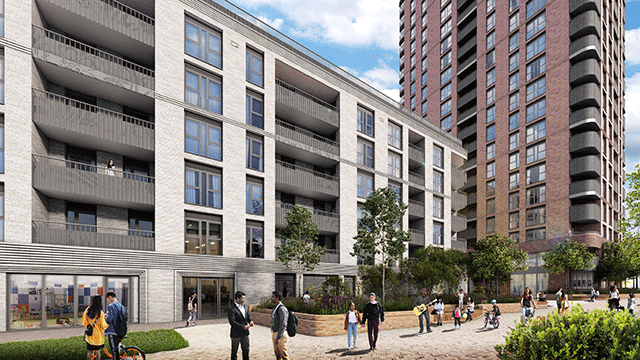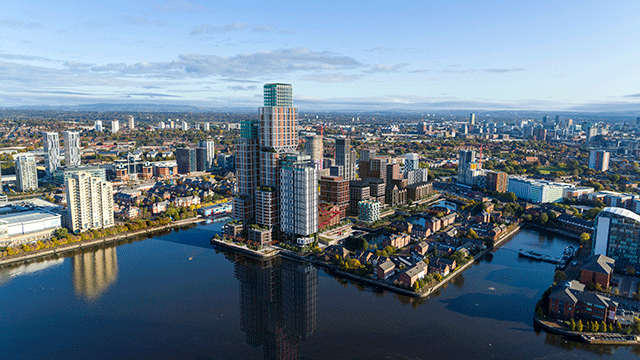COMMENT Just as we begin to address the implications of climate risk for real assets, we now need to focus attention on the even more complex, but related, topic of biodiversity.
According to research by wildlife conservation charities WWF and ZSL, global biodiversity has dropped by 69% since 1970. Land use change is the most significant threat to biodiversity, and in the UK the research indicates that our biodiversity is severely depleted and potentially at risk of collapse.
We know, inherently and from watching David Attenborough, that the elements required to sustain life – food, water, air, a liveable climate – are completely reliant on biological diversity and a functioning ecosystem. The economic system we have created also relies heavily on this rich abundance but fails to value it, and one could argue that it has got to its current level of success precisely because biodiversity doesn’t appear on the balance sheet. With no commonly accepted means of applying a cost to our environment, we do not ration its exploitation, to potentially devastating effect.
Joined-up solutions
Making more intelligent use of our vital and rapidly depleting biodiversity requires some interventions. Developers are already encouraged to protect and restore habitats. Environmental accreditations such as BREEAM, LEED and WELL require the appointment of ecologists early in development projects and the determination of practical steps to measure and maintain pre-development levels of biodiversity on a site. These requirements have entered market expectations and local planning policy in many areas and are familiar territory to the industry.
However, this is not a system-wide approach. It risks promoting compliance-level projects on individual sites while losing the opportunity to create joined-up solutions of sufficient scale to tackle the real problem.
So what would help? Research shows that certain interventions have significant impact, particularly invasive species control, habitat restoration, designation of protected areas and sustainable management. Policy is moving in the right direction – 48 local nature recovery strategy areas and responsible authorities have been created across the UK, and local nature partnerships are being established between multiple stakeholders, including landowners, to enable a more collaborative approach to achieve scale.
Market forces
These initiatives are now being brought together through the requirements of biodiversity net gain. Introduced by the Environment Act 2021, the aim is to bring market forces to bear, not simply to reduce the negative impacts of development but to force a net improvement in biodiversity. It is now mandatory for new developments to demonstrate that they will achieve a 10% improvement in biodiversity compared with the pre-development position. Critically, the net gain achieved must be maintained for a minimum of 30 years after development completion.
BNG uses the biodiversity hierarchy – avoid, mitigate, restore, offset – as a forcing function to drive not just protection of the natural environment but restoration. A detailed pre-development baseline assessment is required, along with a clear plan for improvement. A system of statutory credits with costs attached, framed as the final option to be employed once all others within the biodiversity hierarchy have been demonstrably explored, gives the approach financial teeth, forcing recognition of biodiversity in development budgets.
The art of the possible
How should developers approach achieving this mandatory BNG target? More progressive ones have been working in this area for some time, and many will have protected and restored habitats as part of existing projects and under prior legislation. In some instances, the combination of amenity-led schemes investing in green infrastructure and nature-based solutions, and regulations protecting endangered species have already enabled developments to exceed 10% BNG. This is clearly the art of the possible.
Considering the potential for value creation is critical. The protection of valuable habitats and the provision of species-rich landscaping can contribute to the success of a development as part of high-quality, attractive placemaking.
The key constraints on achieving mandatory 10% on-site BNG will be the biodiversity value of the site prior to development and the opportunities to create new habitats. A large-scale greenfield residential development using low-value modified grassland could offer significant potential to achieve in excess of 20% BNG. The creation of nature corridors to facilitate the movement of people and wildlife around the development, plus the careful introduction of wildflower grasslands, urban and woodland trees and even agroforestry for wider community benefits, will deliver significant biodiversity improvements and successful placemaking.
However, a city centre site with limited available space to accommodate new habitat creation will have negligible biodiversity within its baseline assessment but also limited options for on-site solutions. Achieving BNG will require biodiverse planting through surrounding placemaking and potentially intensive species introduction through rich green roofs. Only once such on-site options have been exhausted should potential off-site solutions be explored.
Institutionalised protection
A market for BNG credits is already beginning to develop as an effective mechanism for accessing off-site solutions once on-site ones have been exhausted. It is critical that on-site solutions remain the priority – the protection and enhancement of natural beauty within our urban landscapes and the creation of new, rich landscapes in large-scale developments requires this. But the development of a trade in off-site credits can also be helpful. Creating a system that institutionalises the protection of a set of specific biodiversity characteristics in a given area for a minimum of 30 years is an impactful change. Potentially viable sites with high biodiversity characteristics will no longer be left untouched through goodwill but because their untouched state is valued.
With the combination of land use change having the most significant negative impact and habitat protection and restoration being an important and successful means of fixing this, real estate is firmly in the frame here, particularly the development and land management sectors. Leaning into these changes and seeing them as a forcing function for value creation will drive beneficial change for everyone.
Louise Ellison is managing director for sustainability at EQT Group and Richard Quartermaine is head of sustainability at Urban&Civic
Photo © Matt Power/Bav Media/Shutterstock
Share your feedback











